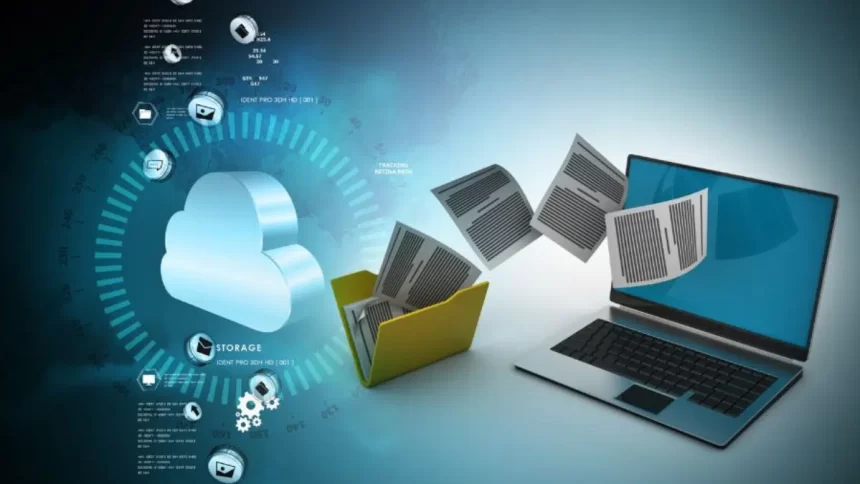The digital era is advancing at an unprecedented rate. To keep up with this fastest-growing digital world, data is a vital component for numerous companies. Enterprises depend on high-end tools and technologies for functioning efficiently. This includes the constant threat of data breaches in the process. One of the major concerns for companies is securing sensitive data while transferring and during backup.
The result of losing confidential and sensitive data in an organization can be nerve-wracking. It can severely harm a company’s reputation and cause unnecessary financial loss and penalties. This is the reason why it is more than essential to secure sensitive data while transferring and backup.
Why Securing Sensitive Data is Important?
Cybercriminals and cyberattackers keep an eye on different types of sensitive data, namely, user’s financial data, PII (personal identifiable information), and other valuable and confidential business information. Moreover, with the growth of digital technologies, there is a high chance that this type of information can reach a person who should not know about it. This, in turn, leads to financial loss for a company, thereby losing customer’s trust and organization’s reputation is damaged.
Data is typically transferred using the internet mode, or stored in external gadgets, for instance, USB drives. Moreover, during data backup and transfer, there is a likelihood of data theft, unauthorized access to users, and data misuse. This is the reason why securing sensitive data is non-negotiable.
Different Kinds of Data Transfers and Backups:
Different sort of data backups and data transfers need utmost security:
1. File transfers:
It includes transferring data from various systems, gadgets or internet mediums, for example, uploading documents and large volumes of data to a cloud storage platform.
2. Having a backup plan:
Creating a solid data backup and methods for restoring data in the event of a disaster or data loss.
3. Data Duplication method:
This method involves duplicating documents and files through various modes like networks and gadgets, for instance, duplicating data between various data centres.
4. Cloud Data transferring:
It includes the use of cloud technology for data transfers, for instance, using Microsoft Azure platform, or Amazon S3.
Types of Security Risks Related to Data Transfers and Backups:
1. Data theft in transit:
This refers to data theft that occurs during transit; for instance, someone steals an important file or data while it is being transferred. For example, data theft can happen when someone gains unauthorized access to a data backup source or a cloud storage platform.
2. Getting unauthorized access to important file or data:
At times, unauthorized individuals gain access to sensitive data during the transfer or storage process. It can easily happen if the password is easy to hack or when the network system is not fully secured.
3. Data tampering:
Yet another security risk is corrupting data while transferring or storing. It happens through malware or failure of hardware.
Best Practices to Consider for Effectively Securing Sensitive Data During Backup and Transfers:
Regardless of any organization, it is vital to keep in mind the CIA (confidentiality, integrity, and availability) of data when transferring and backing it up. These best practices help to maintain CIA of data adequately:
1. Using end-to-end encryption method is right practice:
It is essential to encrypt all important files using a key. This practice enables you to transfer sensitive data to different team members securely. With the help of SSL or TLS, you can encrypt the file or document.
2. Leveraging secured protocols:
Another important consideration is to leverage highly secured protocols to efficiently transfer data, for instance, HTTPS, or SFTP.
3. Access control is the best option:
It is a commonly used practice. Different department members in an organization can easily use this technique, such as sending password-protected files, using MFA (multi-factor authentication), etc. One of the most widely used controls is RBAC (role-based access control), wherein administrators can restrict access to important files to authorized persons only.
4. Backup Encryption is also best to consider:
Teams in an organization can easily encrypt important data with the help of protocols, namely AES or TLS/SSL.
5. Secured storage is also important:
Whenever a company stores backup data, it is crucial to store it in a fully secure location. Companies can opt for locked cabinets or a highly secure cloud storage platform.
6. Auditing and reviewing:
Another important factor to consider is regular auditing of data transfers and backups. It eventually helps in monitoring data activities, and identifying any security threats and incidents and taking measures for any suspicious activity.
Cutting-edge tools for Securing Sensitive Data:
The below-mentioned tools are widely used to secure confidential and sensitive data during backup and transfer:
1. Using Encryption software:
There are future-proof technologies available to secure data through encryption methods, for instance, using Microsoft BitLocker or OpenSSL.
2. Secured File Transfer Protocol (SFTP) software:
There are different types of SFTP that you can use, namely, FileZilla or WinSCP, etc helps in transferring documents and files in a secure way.
3. Cloud Storage tools:
One of the fastest-growing technologies, cloud platforms offer tools such as Amazon S3 or Microsoft Azure that you can use efficiently for storing and backing up data securely.
4. Backup and recovery tools:
There are several feature-rich technologies for data backup. Organizations can leverage tools like Veritas NetBackup or Commvault to enable secure backing up and recovery of data.
Final Thoughts:
Now that you understand the importance of securing sensitive data during transfers or backups, it is crucial to select the right solution for your enterprise. In this data-driven digital world, companies must safeguard the confidentiality, integrity and availability of data. Egnyte’sfuture-ready solution offers robust features to manage sensitive data with ease securely.
Moreover, it is vital to know that enterprise security is an ongoing procedure. Therefore, companies must reevaluate the tools and technologies that help them secure data from theft, corruption, tampering, and other threats. Safeguarding organizations’ valuable and sensitive data is more than necessary to gain customers’ trust and build a good reputation.
Lynn Martelli is an editor at Readability. She received her MFA in Creative Writing from Antioch University and has worked as an editor for over 10 years. Lynn has edited a wide variety of books, including fiction, non-fiction, memoirs, and more. In her free time, Lynn enjoys reading, writing, and spending time with her family and friends.















